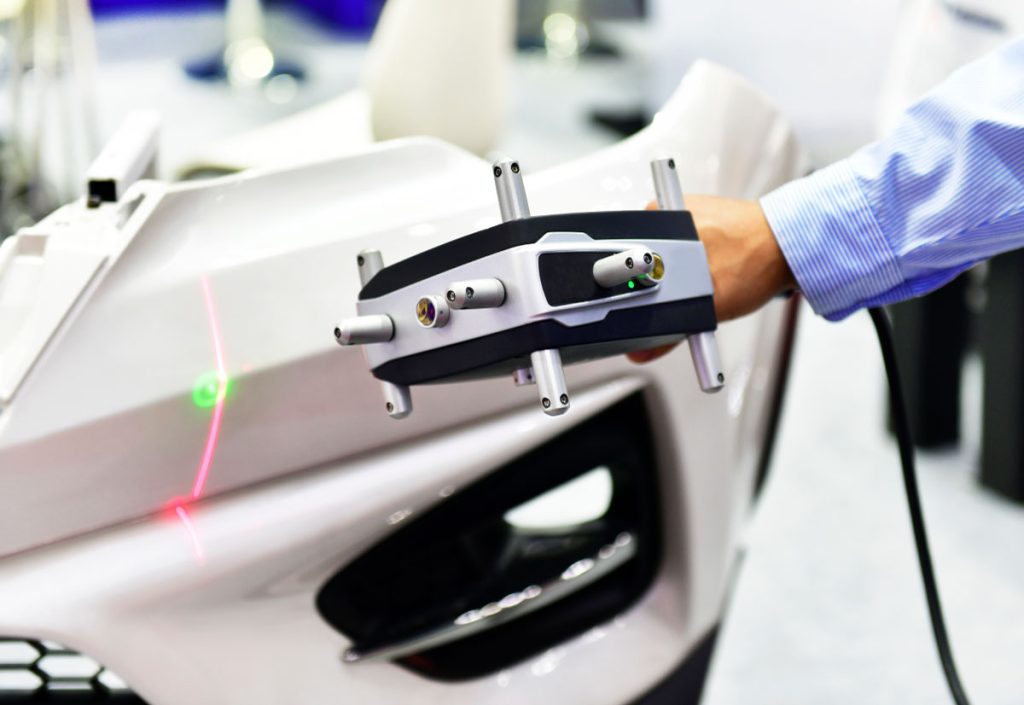case studies
Implementing 3D Measurement for Quality Control in Automotive Manufacturing
The automotive manufacturing industry faces constant pressure to produce high-quality vehicles while maintaining efficiency and cost-effectiveness. Ensuring the accuracy and precision of components is essential to meet safety standards and customer expectations.
In this case study, we will explore how a leading automotive manufacturer successfully implemented 3D measurement technology to enhance their quality control processes.

Challenge
Company recognized the need to improve the quality control of components in their manufacturing process. Their existing quality control methods relied heavily on manual measurements using traditional gauges and tools. This approach was time-consuming, prone to human error, and limited in terms of comprehensively assessing complex components. To maintain their competitive edge, company needed a solution that could:
- Enhance measurement accuracy and precision.
- Reduce measurement time to increase production efficiency.
- Provide comprehensive data for in-depth analysis and process improvement.
- Ensure compliance with industry regulations and safety standards.
- Reduction of measurement/control errors
Client profile
Industry: Automotive Manufacturing
Size: 1,000+ employees
Products: Various models of passenger vehicles
Solution
After careful evaluation and consultation with 3D measurement technology experts, company decided to implement a state-of-the-art 3D measurement system in their manufacturing facilities. The chosen solution included the following components:
High-Precision 3D Scanners: We have installed high-precision 3D scanners at critical points in our production process. These scanners use laser technology to capture detailed three-dimensional component data.
3D Metrology Software: Adopted specialized 3D metrology software to process the scanned data. This software allowed for accurate measurement, alignment, and comparison of scanned components against digital CAD models.
Integrated Data Management: Integrated the 3D measurement data into their existing quality management systems. This allowed for seamless data sharing and analysis across different departments, from design and engineering to production and quality control.
Training and Workforce Development: A comprehensive training program was implemented to ensure that the workforce was proficient in using the new technology. This included both technical training on the equipment and software as well as the integration of 3D measurement concepts into the company’s quality control procedures.
Implementation Process
The implementation process was carried out in multiple phases to minimize disruptions to production:
Pilot Phase: We carried out a pilot project in one of their production plants. This phase included the installation of 3D measuring equipment, staff training and testing of the technology on a small scale to ensure the company’s requirements were met.
Rollout Phase: After a successful pilot phase, we gradually implemented the technology across all their manufacturing facilities. This involved the installation of additional 3D scanners, expanding the workforce training program, and integrating the data management system company-wide.
Continuous Improvement: Regulary reviewed and improved their quality control processes based on the data generated by the 3D measurement system. This iterative approach allowed them to make real-time adjustments to manufacturing processes and achieve higher levels of quality and efficiency.
Results
The implementation of 3D measurement technology brought about significant improvements for company:
Enhanced Accuracy: The 3D measurement system provided measurements with sub-millimeter accuracy, reducing the chances of defects and ensuring compliance with tight industry tolerances.
Increased Efficiency: Measurement time has been significantly reduced compared to manual methods, resulting in faster production cycles and increased productivity.
Data-Driven Decision Making: The 3D measurement data became a valuable resource for company. It allowed them to identify trends, deviations, and areas for improvement in their manufacturing processes, resulting in reduced scrap and rework.
Regulatory Compliance: Company’s ability to consistently meet quality standards and safety regulations improved, reducing the risk of costly recalls and fines.
Competitive Advantage: The implementation of 3D measurement technology helped company maintain a reputation for producing high-quality vehicles, enhancing their competitiveness in the market.
Conclusion
The adoption of 3D measurement technology revolutionized the quality control processes at Automotive Excellence Corporation. By leveraging high-precision 3D scanners, advanced metrology software, and integrated data management, they achieved higher levels of accuracy, efficiency, and compliance with industry standards.
This case study demonstrates how embracing innovative technology can lead to significant improvements in quality control, ultimately benefiting both the company and its customers in the automotive manufacturing industry.
